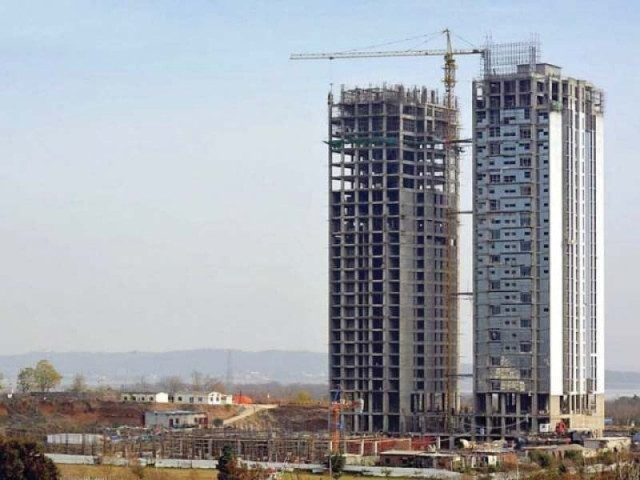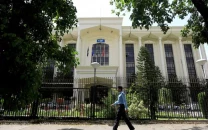Structural issues behind property leasing, mortgage
Many properties cannot be leased as they don’t have completion certificate

The World Bank’s board of executive directors earlier approved three financing projects in Pakistan worth $435 million as the country is experiencing a severe housing shortage.
According to the World Bank, “Pakistan’s estimated housing shortage is up to 10 million units, about 40% in urban areas.”
A critical aspect is the scarcity of property financing, with mortgage financing-to-GDP ratio of just 0.25%. It is one of the lowest in South Asia compared to Bangladesh (3%) and India (11%).
A large amount of property cannot be leased, meaning the pertinent building control authority does not recognise it.
Many sub-urban and semi-rural areas have a disproportionate share in low-cost rental housing, which the land development authorities do not recognise, meaning they also cannot be leased. However, due to lower rates and rents, many residents live in these areas.
In the case of urban areas, many properties cannot be leased because they do not have a completion certificate. This narrows down the option of leasing a property.
“Pakistan is mostly a cash market; a mortgage market was never developed largely due to the lax foreclosure laws and high interest rates,” said Ammar Habib Khan, Chief Risk Officer of Karandaaz Pakistan. “These factors make it unaffordable for mortgages.”
The option other than leasing a property is mortgaging it. Recently, the SBP increased the interest rate from 9.75% to the double digit at 12.25% and then to 13.75%.
With the interest rates in double digits or near double digits, mortgages are simply unaffordable. The inflation target of the central bank of Pakistan is 8-9%.
It will be a moonshot if the long-term interest rate reverses and snail walks to 9.75%. But the mortgage at 9-10% is unaffordable.
Another aspect is the rental yield. As postulated by Profit, the average rental yield for the residential urban areas is 3%. It implies that prices are rising faster than the cost of living.
Renting is less expensive than getting a mortgage. A record amount of money is either floating around in real estate files, resulting in increasing prices of dumped plots.
Buying something expensive and then seeing the price drop does not mean the owner will sell it because the real estate market is a cash market. Of course, the market rebounds even it takes a decade.
Mortgages are also long-term investments, typically lasting 15 to 20 years. If a bank or NBFC provides this long-term loan, they will also require long-term liabilities, such as bonds or some other form of security.
It is always challenging to get this from banks or NBFCs, and if it eventually happens, it will be on strict and harsh terms and conditions. That is not a suitable option as well.
“NBFC has a funding problem. We do not have a deep enough secondary market for raising funds, so it is difficult for NBFCs to raise debt, which can be further lent as mortgages,” said Ammar Habib Khan.
“All NBFCs struggle with the asset-liability mismatch. The liabilities they can raise have a maturity of less than one year while mortgages have a maturity of greater than one year.”
In comparison to this, India has a massive NBFC market that offers millions of low-income mortgages funded by long-term liabilities. As a result, banks are less effective in this domain.
India’s NBFCs, which accounted for 23% of the market in FY19, have overtaken the country’s state-owned banks, which still account for a majority of the country’s credit system.
Due to the asset quality pressures and higher capital requirements, the banks’ ability to lend has been restricted. Due to better distribution channels for rural and semi-urban retail customers underserved by the banks, NBFCs have benefited from more robust growth opportunities.
Contrary to India, Pakistani banks act as low-cost deposit collectors, ie depositing the funds with the government. A bank does not even have to consider mortgages when such a system is in place.
Moreover, why would someone take the challenging route when the government provides free cash and IOUs? It is ill to think of getting a mortgage when banks do not even allow opening an account without a salary slip.
Moreover, on the contrary, Indian banks and NBFCs have developed successful credit scoring models that assist in giving low-income mortgages to the lower middle class, which belongs to the informal sector and is unbanked.
It is a structural issue, and it can only be made effective by discouraging the rent-seeking and cash-based economy. There is cautious optimism.
The writer is an expert on political economy, cities and governance, and is working as a research associate at the Centre for Social and Political Research
Published in The Express Tribune, May 30th, 2022.
Like Business on Facebook, follow @TribuneBiz on Twitter to stay informed and join in the conversation.


















COMMENTS
Comments are moderated and generally will be posted if they are on-topic and not abusive.
For more information, please see our Comments FAQ